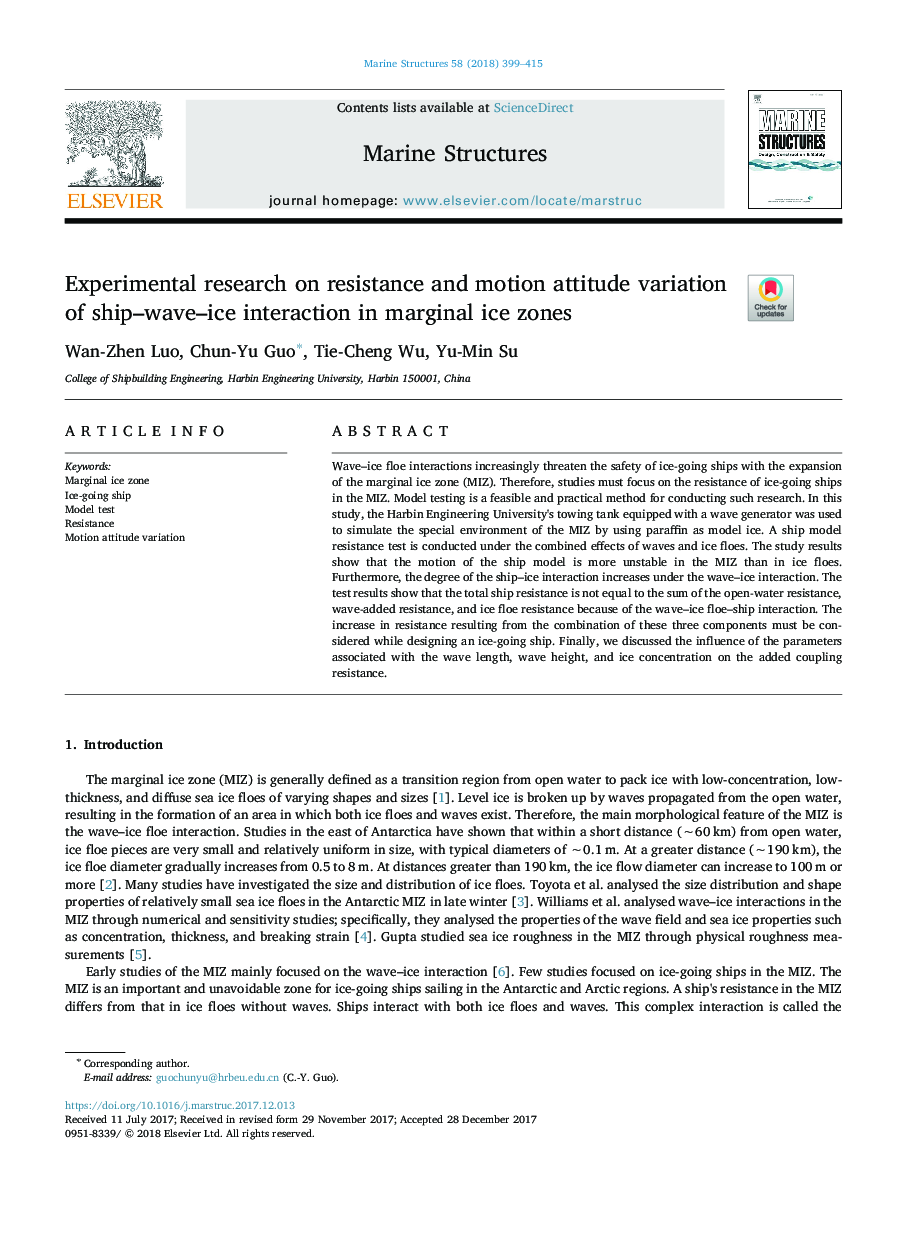| Article ID | Journal | Published Year | Pages | File Type |
|---|---|---|---|---|
| 6758076 | Marine Structures | 2018 | 17 Pages |
Abstract
Wave-ice floe interactions increasingly threaten the safety of ice-going ships with the expansion of the marginal ice zone (MIZ). Therefore, studies must focus on the resistance of ice-going ships in the MIZ. Model testing is a feasible and practical method for conducting such research. In this study, the Harbin Engineering University's towing tank equipped with a wave generator was used to simulate the special environment of the MIZ by using paraffin as model ice. A ship model resistance test is conducted under the combined effects of waves and ice floes. The study results show that the motion of the ship model is more unstable in the MIZ than in ice floes. Furthermore, the degree of the ship-ice interaction increases under the wave-ice interaction. The test results show that the total ship resistance is not equal to the sum of the open-water resistance, wave-added resistance, and ice floe resistance because of the wave-ice floe-ship interaction. The increase in resistance resulting from the combination of these three components must be considered while designing an ice-going ship. Finally, we discussed the influence of the parameters associated with the wave length, wave height, and ice concentration on the added coupling resistance.
Related Topics
Physical Sciences and Engineering
Engineering
Civil and Structural Engineering
Authors
Wan-Zhen Luo, Chun-Yu Guo, Tie-Cheng Wu, Yu-Min Su,
